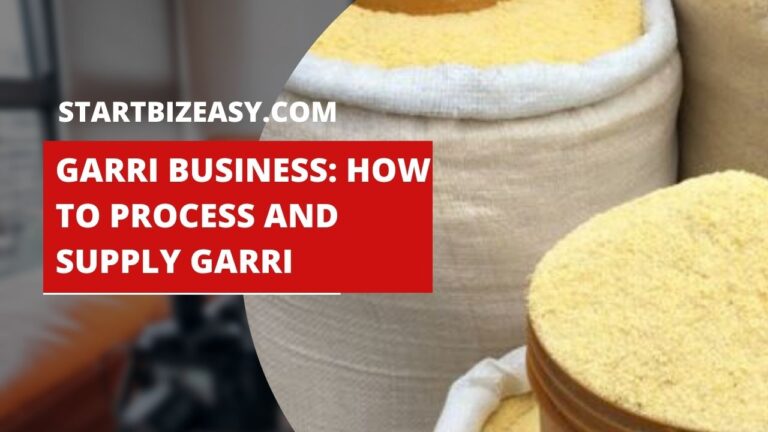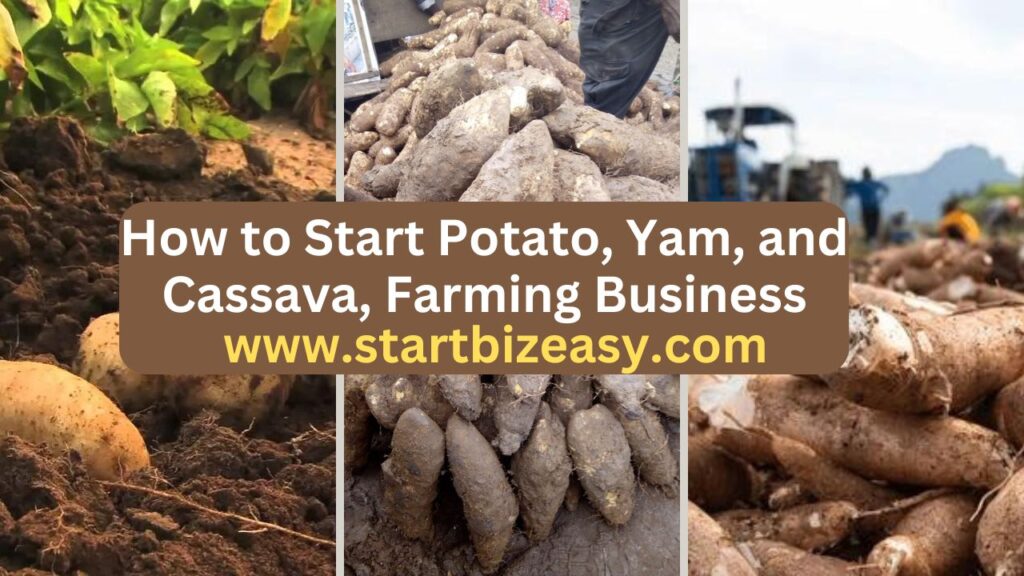
Agricultural enterprises play a significant role in global food production and economic development, especially in regions where farming is a primary livelihood. Among the diverse crops cultivated worldwide, potatoes, yams, and cassavas are notable for their nutritional value, adaptability to various climates, and economic viability.
In this article on “How to Start Potato, Yam, and Cassava, Farming Business” we provide in-depth knowledge of the farming business for these three staple crops.
Table of Contents
Potatoes
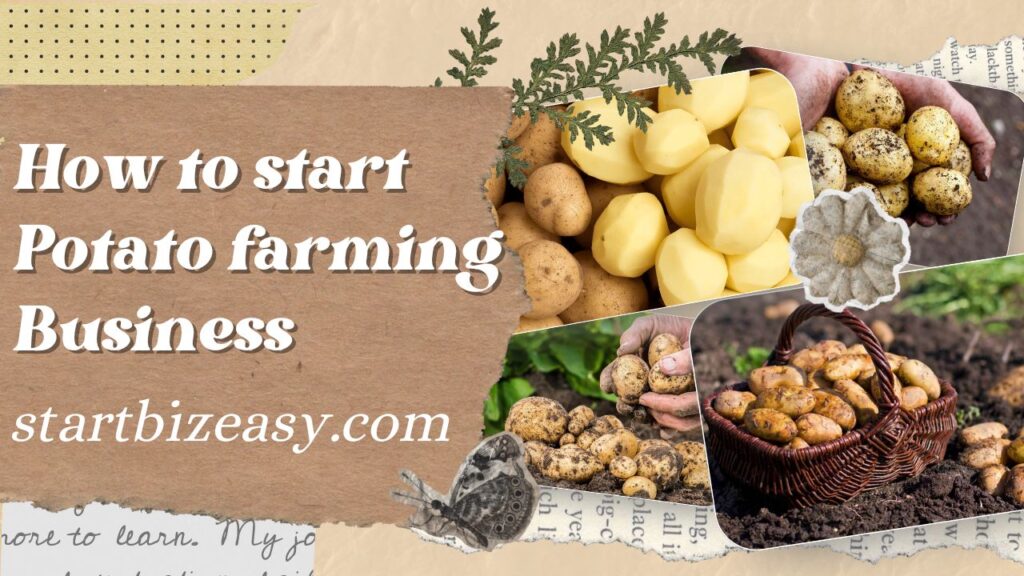
When you think of potatoes, envision a versatile and staple crop cherished worldwide. Potatoes (Solanum tuberosum) thrive in cooler climates and are known for their relatively short growing period. You will find that they are a rich source of carbohydrates, vitamins, and minerals, making them a dietary staple in many cultures.
As you delve into potato farming, you will discover that this crop adapts well to a variety of culinary applications, from mashed potatoes and fries to soups and stews. Their versatility in the kitchen translates into a steady demand, providing you with numerous market opportunities.
Cultivation: To cultivate potatoes successfully, you will need to start with well-drained, loamy soil that has good aeration. Ensuring that your soil is slightly acidic, with a pH between 5.0 and 6.0, is crucial for optimal growth. Begin by preparing the soil through plowing and harrowing to create an ideal seedbed.
When planting your seed potatoes, place them in trenches or mounds, ensuring adequate spacing to allow for tuber expansion. This will help each plant develop fully, providing you with a more substantial yield. Consistent irrigation is vital, especially during the tuber formation stage, as potatoes require a balanced moisture level. However, be cautious of over-watering, as this can lead to rot and disease.
Pest control is another critical aspect of potato farming. You will need to monitor your crops for common pests like the Colorado potato beetle and aphids, as well as diseases such as late blight and early blight. Implementing integrated pest management strategies, including crop rotation and the use of resistant varieties, can help you maintain healthy crops.
Harvesting and Marketing: Typically, you can expect to harvest your potatoes around 70-120 days after planting, depending on the variety you choose. When the foliage begins to yellow and die back, it’s a sign that your potatoes are ready for harvest. Carefully dig up the tubers, taking care not to damage them, as bruises and cuts can lead to spoilage.
Once harvested, proper storage is essential to prolong the shelf life of your potatoes. Store them in a cool, dark place with good ventilation to prevent sprouting and decay. You can also consider washing and packaging your potatoes for sale, which can add value and attract more buyers.
The market demand for potatoes is consistently high, giving you the opportunity to explore various avenues for selling your produce. You can target local farmers’ markets, supply restaurants and grocery stores, or even tap into larger commercial buyers and food processing companies. By understanding the needs of your market and maintaining high-quality standards, you will be well-positioned to succeed in the potato farming business.
Yams
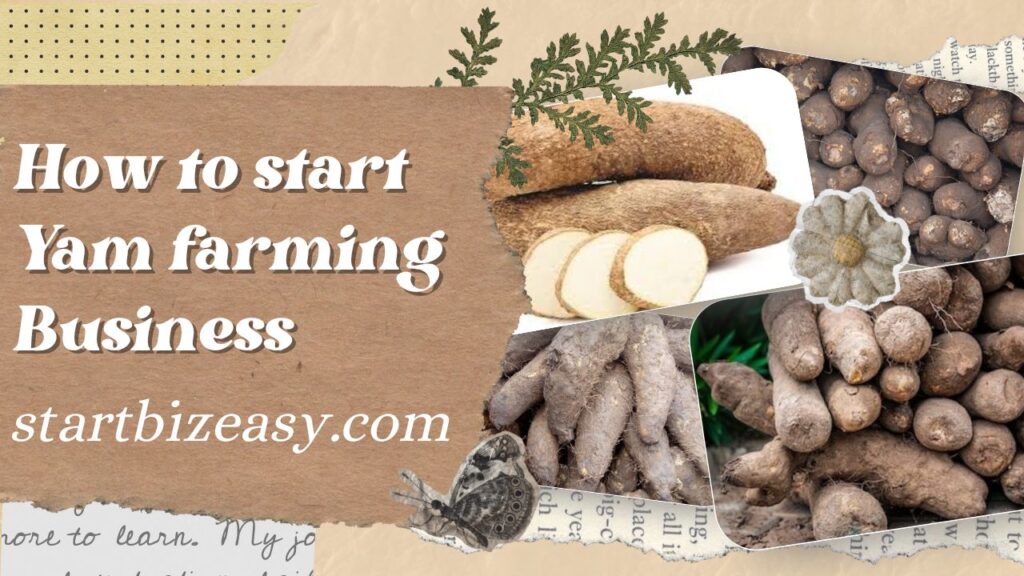
Yams (Dioscorea spp.), distinct from sweet potatoes, are a crop with profound cultural and economic significance. These tuberous roots are celebrated for their high starch content and are widely grown in tropical and subtropical regions. When you consider the cultivation of yams, you are embracing a tradition that has sustained communities for generations, while also tapping into a crop with considerable market potential.
Cultivation: To cultivate yams effectively, you will need a tropical or subtropical climate. These crops thrive in fertile, well-drained soil with a pH between 5.5 and 6.5. Begin by preparing your land, ensuring it is free from weeds and has good soil structure. Yams are typically propagated using “seed yams” or tuber cuttings.
When planting, place these cuttings in mounds or ridges. This technique improves drainage and aeration, which are critical for healthy tuber development. Ensure that the mounds are spaced adequately to allow the yams to grow without competition for nutrients. You will find that staking is often necessary to support the vines as they grow, preventing them from spreading along the ground and making harvesting easier.
Irrigation and Maintenance: Maintaining consistent soil moisture is crucial, particularly during the early stages of growth and tuber formation. You should irrigate your yam plants regularly, ensuring the soil remains moist but not waterlogged. Implementing proper pest and disease management strategies is also essential. Yams are susceptible to pests like nematodes and yam beetles, as well as diseases such as anthracnose. Monitoring your crops and employing integrated pest management practices will help you maintain healthy plants.
Harvesting and Marketing: Yams have a relatively long growing season, typically ranging from 6 to 12 months, depending on the variety. You will know that your yams are ready for harvest when the vines begin to yellow and die back. Carefully dig up the tubers to avoid damaging them, as any cuts or bruises can reduce their market value and storage life.
After harvesting, yams need to be cured in the sun for a few days. This curing process helps to toughen their skin, enhancing their storage life and reducing the risk of spoilage. Proper storage in a cool, dry place will keep your yams in good condition for several months.
The market for yams is vast and varied. Locally, yams are a dietary staple, and you can sell them at farmers’ markets or supply them to local grocery stores and restaurants. On a larger scale, yams have significant export potential, particularly to regions where they are an essential part of the diet. By understanding and tapping into these markets, you can maximize the economic benefits of your yam farming venture.
Cassava
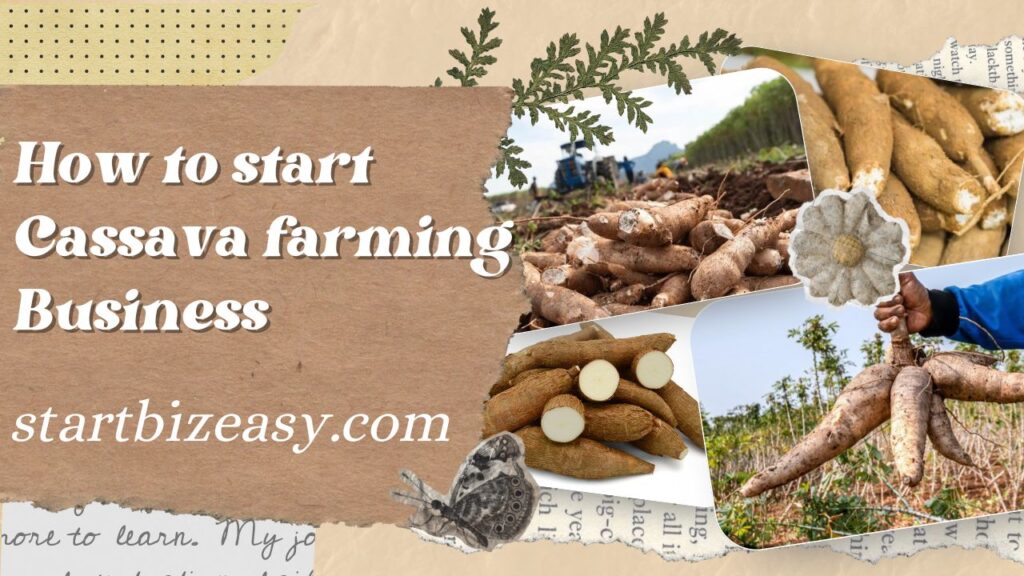
Cassava (Manihot esculenta), also known as manioc or yuca, is a robust crop that thrives in poor soils where other crops might fail. As you venture into cassava farming, you will appreciate its resilience and economic potential. Cassava is a major source of carbohydrates and holds particular value in many tropical and subtropical regions. Its ability to grow in less-than-ideal conditions makes it an essential crop for food security and economic stability.
Cultivation: To cultivate cassava effectively, you will need a warm climate with well-drained sandy loam soil. Unlike many crops, cassava is typically propagated from stem cuttings rather than seeds. You should select healthy, mature stems and cut them into sections, each about 20-30 centimeters long.
Plant these cuttings vertically in prepared fields, ensuring adequate spacing to allow for proper root development. Proper spacing is crucial to avoid competition for nutrients and to facilitate easy harvesting. While cassava is drought-resistant, it benefits from regular watering, especially during the establishment phase. Ensuring the young plants receive enough moisture will promote robust growth and increase your overall yield.
Maintenance: Once your cassava plants are established, they require minimal maintenance. However, you should still monitor them for pests and diseases. Common issues include cassava mosaic disease and root rot. Implementing good agricultural practices, such as crop rotation and intercropping, can help mitigate these risks. Additionally, maintaining soil fertility through the use of organic or inorganic fertilizers will support healthy growth.
Harvesting and Marketing: Cassava has a flexible harvesting window, typically ranging from 8 to 24 months after planting. You will know your cassava is ready for harvest when the leaves begin to yellow and fall off. Carefully dig up the roots to avoid breakage, as damaged roots have a shorter shelf life and reduced market value.
After harvesting, you need to act quickly, as fresh cassava roots have a short shelf life. Prompt processing or sale is crucial to prevent spoilage. You can market cassava in various forms to maximize its value. Fresh roots are popular in local markets, while dried chips are often used for animal feed or further processing. Cassava can also be processed into flour, tapioca, and starch, each offering different market opportunities.
By diversifying the forms in which you sell cassava, you can reach a broader range of consumers and industries. For instance, cassava flour is a gluten-free alternative in baking, while tapioca is used in various food products. Starch extracted from cassava is valuable in both the food industry and for industrial applications.
Establishing Your Farming Business
Embarking on the journey of farming potatoes, yams, and cassavas is a rewarding venture if you carefully plan and execute each step. Here’s a personalized guide to help you establish a successful farming business:
1. Market Research: Start by identifying your target market. Understand who your potential customers are and assess the demand for each crop in your location and/or desired market location. Fortunately, these three crops are among the most in-demand staple foods globally with each having a market value of over; Yam: USD 47.36 Million, Poteto: USD 115.74 billion, Cassava: USD 175.9 Billion. The real question is whether you can meet that demand. Conduct research on current pricing trends, analyze your competitors, and identify potential buyers. This information will be crucial for developing a solid business plan to guide your decisions and strategies moving forward.
2. Land Preparation: Next, choose land that is suitable for growing potatoes, yams, and cassavas. Each crop has specific soil requirements that you must meet to ensure healthy growth and high yields. Ensure that the land is properly prepared by tilling and adding any necessary soil amendments. Additionally, set up an efficient irrigation system to provide your crops with adequate water throughout the growing season.
3. Investment in Quality Inputs: Investing in high-quality inputs is crucial for the success of your farming business. Purchase the best seeds, fertilizers, and pest control measures available. High-quality inputs will significantly impact the yield and profitability of your crops. By prioritizing quality, you can reduce the risk of disease and pest infestations, which can compromise your harvest.
4. Sustainable Practices: To ensure the long-term health and productivity of your soil, implement sustainable farming practices. Practice crop rotation to prevent soil depletion and reduce pest and disease cycles. Use organic fertilizers to enrich the soil without causing harm to the environment. Additionally, adopt integrated pest management techniques to control pests in an environmentally friendly manner. Sustainable practices not only benefit your crops but also contribute to the overall health of the ecosystem.
5. Marketing and Distribution: Finally, develop a robust marketing strategy to promote your products. Consider various channels such as local markets, supermarkets, and even export opportunities. Building strong relationships with buyers and distributors will help you maximize your reach and profitability. Use social media, word-of-mouth, and other marketing tools to create awareness and demand for your crops.
By following these steps, you will be well on your way to establishing a thriving farming business that focuses on potatoes, yams, and cassavas. Your dedication to understanding the market, preparing the land, investing in quality inputs, implementing sustainable practices, and effectively marketing your products will ensure your success in the agricultural industry.
How much do I need to Start Potato, Yam, and Cassava, Farming Business in Nigeria
Starting a farming business for potatoes, yams, and cassava in Nigeria requires careful planning and budgeting. The costs will vary significantly based on whether you are pursuing commercial-scale or small-scale farming. Below is an outline of the estimated costs for each type of farming:
Small-Scale Farming
Small-scale farming typically involves cultivating 1-5 hectares of land. Here are the approximate costs:
Land Preparation:
- Land Lease or Purchase: ₦50,000 – ₦100,000 per hectare (varies by location)
- Clearing and Plowing: ₦20,000 – ₦50,000 per hectare
Planting Materials:
- Seed Potatoes: ₦100,000 per hectare
- Seed Yams: ₦200,000 per hectare
- Cassava Stem Cuttings: ₦50,000 per hectare
Inputs:
- Fertilizers: ₦30,000 – ₦50,000 per hectare
- Pesticides/Herbicides: ₦10,000 – ₦20,000 per hectare
- Irrigation (if needed): ₦50,000 – ₦100,000 per hectare
Labor:
- Planting and Maintenance: ₦50,000 – ₦100,000 per hectare
- Harvesting: ₦20,000 – ₦50,000 per hectare
Miscellaneous:
- Tools and Equipment: ₦50,000 – ₦100,000
- Transportation: ₦10,000 – ₦20,000
Total Estimated Cost for Small-Scale Farming (1 hectare):
- Potatoes: ₦340,000 – ₦540,000
- Yams: ₦440,000 – ₦640,000
- Cassava: ₦240,000 – ₦440,000
Commercial-Scale Farming
Commercial-scale farming typically involves cultivating 20 hectares or more. Here are the approximate costs:
Land Preparation:
- Land Lease or Purchase: ₦50,000 – ₦100,000 per hectare (varies by location)
- Clearing and Plowing: ₦20,000 – ₦50,000 per hectare
Planting Materials:
- Seed Potatoes: ₦100,000 per hectare
- Seed Yams: ₦200,000 per hectare
- Cassava Stem Cuttings: ₦50,000 per hectare
Inputs:
- Fertilizers: ₦30,000 – ₦50,000 per hectare
- Pesticides/Herbicides: ₦10,000 – ₦20,000 per hectare
- Irrigation Systems: ₦200,000 – ₦400,000 per hectare (one-time investment)
Labor:
- Planting and Maintenance: ₦50,000 – ₦100,000 per hectare
- Harvesting: ₦20,000 – ₦50,000 per hectare
Infrastructure:
- Storage Facilities: ₦1,000,000 – ₦5,000,000
- Machinery (tractors, planters, harvesters): ₦5,000,000 – ₦10,000,000
Miscellaneous:
- Tools and Equipment: ₦100,000 – ₦500,000
- Transportation: ₦100,000 – ₦500,000
Total Estimated Cost for Commercial-Scale Farming (20 hectares):
- Potatoes: ₦18,800,000 – ₦34,000,000
- Yams: ₦22,800,000 – ₦38,000,000
- Cassava: ₦14,800,000 – ₦30,000,000
Considerations on the cost
- Location: Costs can vary significantly based on the region in Nigeria. Proximity to markets, quality of soil, and availability of water resources are important factors.
- Government Grants and Loans: Explore agricultural grants, loans, and subsidies offered by the Nigerian government and financial institutions to support farmers.
- Training and Expertise: Investing in training and consulting with agricultural experts can improve yield and efficiency.
- Market Access: Establish connections with buyers and consider value-added products to maximize profits.
Read More:
- How to Start a Fruit and Vegetable Business as a Seller
- How to Start a Profitable Farming Business in Nigeria
- How to Start a Successful Palm Oil Business in Nigeria
- How to Start a Crocodile and Alligator Farm
- Rice Business in Nigeria Made Easy: A Success Guide
- The 5 Most Profitable Agricultural Business

